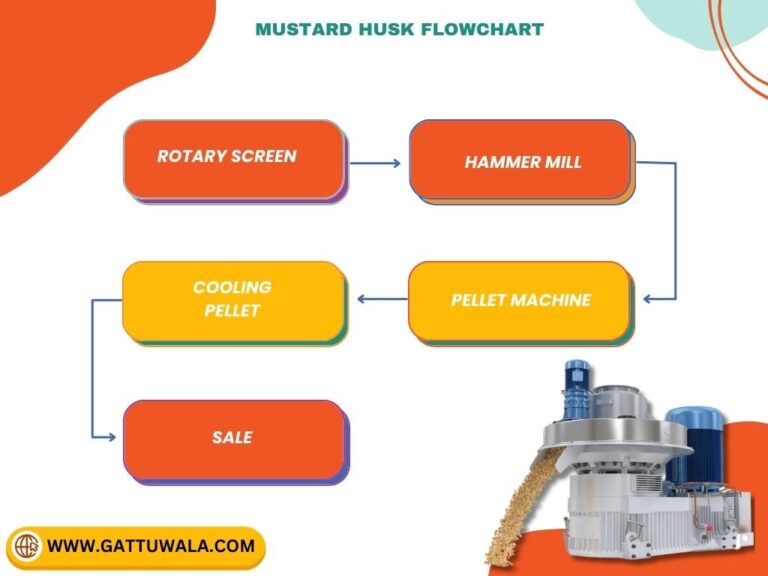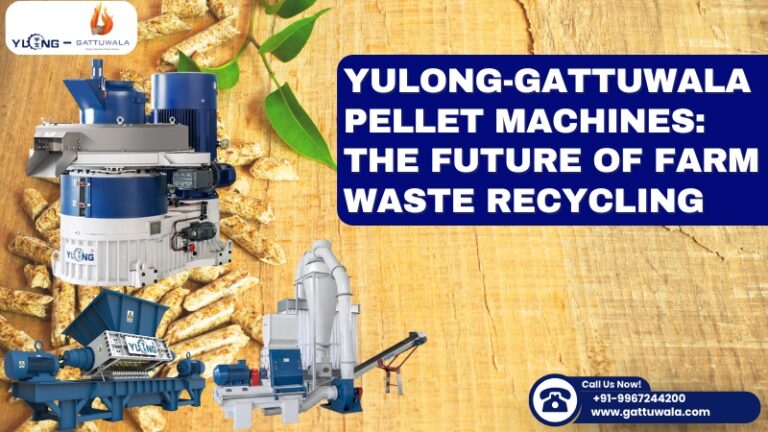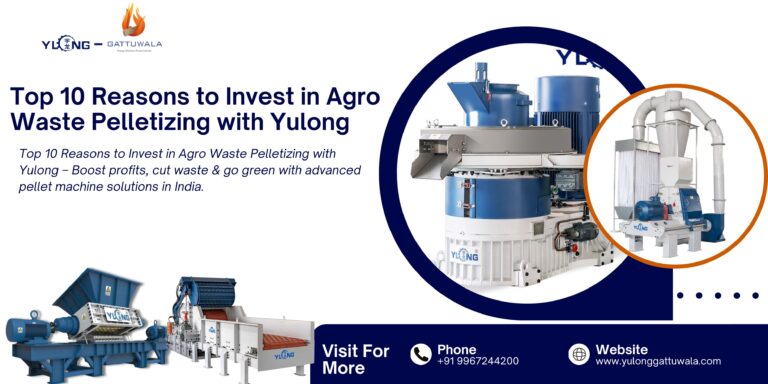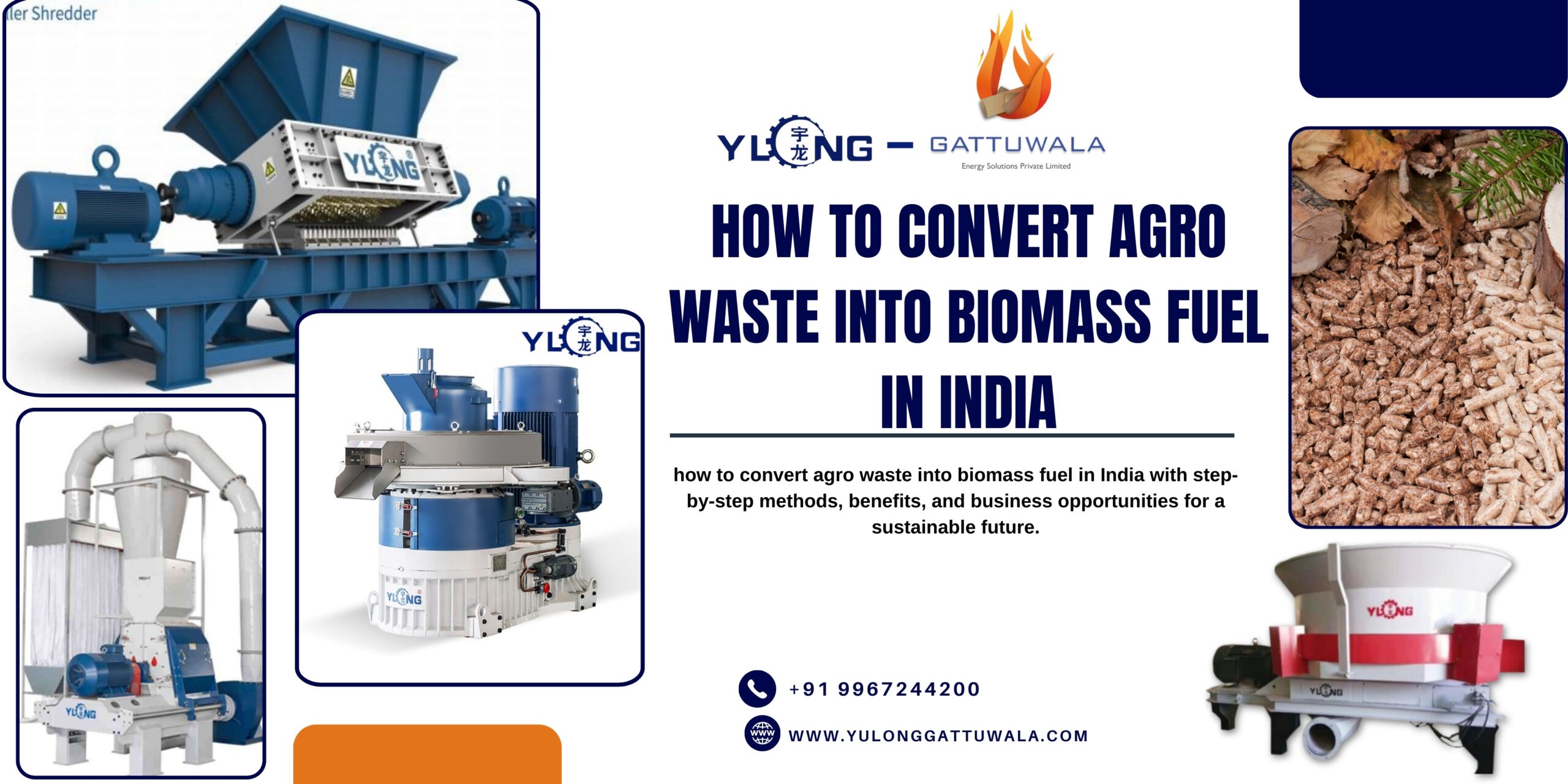- August 14, 2025

India, with its vast agricultural sector, generates millions of tonnes of agro waste every year—rice husk, sugarcane bagasse, wheat straw, corn stalks, and more. Traditionally, much of this waste is burned in fields, causing air pollution and resource loss. But today, advanced biomass pellet technology offers a sustainable solution: converting agro waste into clean, high-energy biomass fuel. This transformation not only tackles environmental concerns but also creates a profitable green business.
Step 1: Understanding Biomass Fuel
Biomass fuel is energy-rich material derived from organic matter. When agricultural residues are processed into pellets or briquettes, they become a uniform, easy-to-handle, and highly efficient renewable fuel source. Biomass pellets have a high calorific value, low moisture content, and can replace coal in industries, power plants, and heating systems.
Step 2: Collection & Sorting of Agro Waste
The first step is collecting and sorting the raw material. Common sources include:
• Rice husk from milling plants
• Sugarcane bagasse from sugar factories
• Groundnut shells from processing units
• Wheat and paddy straw from farms
• Corn cobs from agricultural fields
Sorting ensures that only clean, dry, and non-contaminated waste is processed, improving pellet quality.
Step 3: Drying the Raw Material
Agro waste often has high moisture content (20–50%). For pellet production, it needs to be reduced to 10–15%. This is done using biomass flash dryers or rotary drum dryers. Proper drying prevents mold growth, increases combustion efficiency, and ensures pellets are durable.
Step 4: Grinding & Size Reduction
Pellets require uniform particle size (usually below 5 mm). Large pieces of agro waste are fed into hammer mills or wood chippers to create fine powder or small chips. Uniform size allows better compaction in the pellet mill.
Step 5: Pelletizing
The heart of the process is the pellet machine. The ground material is fed into the ring die or flat die pellet mill, where rollers compress it under high pressure. The heat generated during compression binds the particles naturally, eliminating the need for synthetic binders. The output is cylindrical biomass pellets, typically 6–8 mm in diameter.
Step 6: Cooling & Packaging
Fresh pellets are hot and soft; they must be cooled to harden. Cooling also prevents moisture absorption during storage. Once cooled, pellets are packed in bags or bulk containers for transportation to industrial clients or retail markets.
Advantages of Converting Agro Waste into Biomass Fuel in India
- Reduces Pollution – Prevents harmful stubble burning.
- Cost-Effective Energy – Cheaper than coal or LPG.
- Renewable & Sustainable – Reduces reliance on fossil fuels.
- Government Support – Subsidies and schemes under MNRE & NTPC biomass co-firing policy.
- Income for Farmers – Waste becomes a marketable commodity.
- Industrial Demand – Boilers, furnaces, and power plants are shifting to biomass pellets.
Investment & Business Opportunities
With rising coal prices and stricter emission norms, biomass pellet plants are in high demand. Yulong-Gattuwala Energy, for instance, provides complete pellet plant solutions—from hammer mills and dryers to fully automated pellet machines—helping entrepreneurs set up profitable biomass fuel plants in India.
Investment depends on capacity:
• Small-scale plant (500 kg/hr): ₹8–15 lakh
• Medium plant (1–3 TPH): ₹30–80 lakh
• Large industrial plant (5+ TPH): ₹1–3 crore
Government Initiatives Supporting Biomass Fuel
The NTPC Biomass Co-Firing Policy mandates coal-based power plants to replace a portion of coal with biomass pellets, creating huge demand. The National Bio-Energy Mission also offers subsidies on equipment, making it easier for startups to enter the biomass sector.
Converting agro waste into biomass fuel is not just an eco-friendly step—it’s a profitable business opportunity in India’s growing renewable energy sector. With the right pellet machine, dryer, and grinder setup, entrepreneurs can tap into a booming market while solving environmental challenges.
📞 Interested in setting up a biomass pellet plant in India? Contact Gattuwala Energy for expert consultation, equipment, and government subsidy support.

Biomass Pellet Plant – Yulong Pellet Machine Manufacturer



